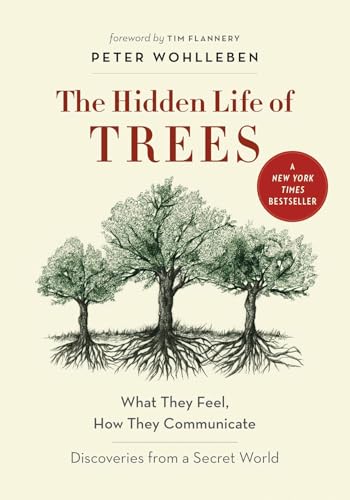The Hidden Life of Trees
These book club questions are from the publisher, Greystone Books.
Book club questions for The Hidden Life of Trees by Peter Wohlleben
Use these discussion questions to guide your next book club meeting.
What do you think is the most important lesson that human society can adopt from the lives of trees?
When asked why he chose to anthropomorphize trees, Peter Wohlleben said, “I use words of emotion to connect with people’s experience. Science often takes these words out, but then you have a language people can’t relate to and can’t understand.” What do you think of this approach? And in what ways is this anthropomorphism effective in The Hidden Life of Trees?
The Hidden Life of Trees became a surprise bestseller, earning a place on the New York Times and many other bestseller lists. What do you think it is about the present moment we live in that makes nature such a popular topic for today’s readers?
Fungi, while functioning as the “wood wide web,” can allow trees to communicate and share crucial survival information. However, they can also damage trees by invading the bark and causing rot. How does this relationship reflect or parallel the one that humans have with our internet?
Peter mentions how a number of forest conservationist methods that help trees in the short-term actually damage a forest’s long-term health. In the forest that he works with in Hümmel, Peter has banned machines and only allows log removal by horses. In general, does technological advancement work with nature or against it? Can you think of examples of each?
When a woodpecker drills holes into a tree’s bark, the tree is then susceptible to rot or an invasion of fungi. On the other hand, birds play an integral role in plant reproduction by spreading seeds over long distances. How would you describe the complex relationship between animals and trees?
In the first chapter called “Friendship,” Peter describes himself being profoundly inspired when he realizes that what he initially took for stones were actually remnants of a rotting stump kept alive by neighboring trees. Is there a significant tree or forest area that has similarly affected your life?
Wohlleben writes that people are more physiologically relaxed when journeying through a deciduous forest due to the chemical signals the trees release. However, this effect is absent in a walk through a coniferous forest. Have you experienced this difference? Which do you prefer, and why?
Western society places more of an emphasis on the individual, whereas Eastern society values a more collective culture. In terms of the ways in which trees care for themselves and others, where do they fall in this spectrum and why?
Did you have any misconceptions about trees that were changed by reading Peter’s book? If so, what were they? And how did it feel to have your perspective change?
The Hidden Life of Trees Book Club Questions PDF
Click here for a printable PDF of the The Hidden Life of Trees discussion questions

